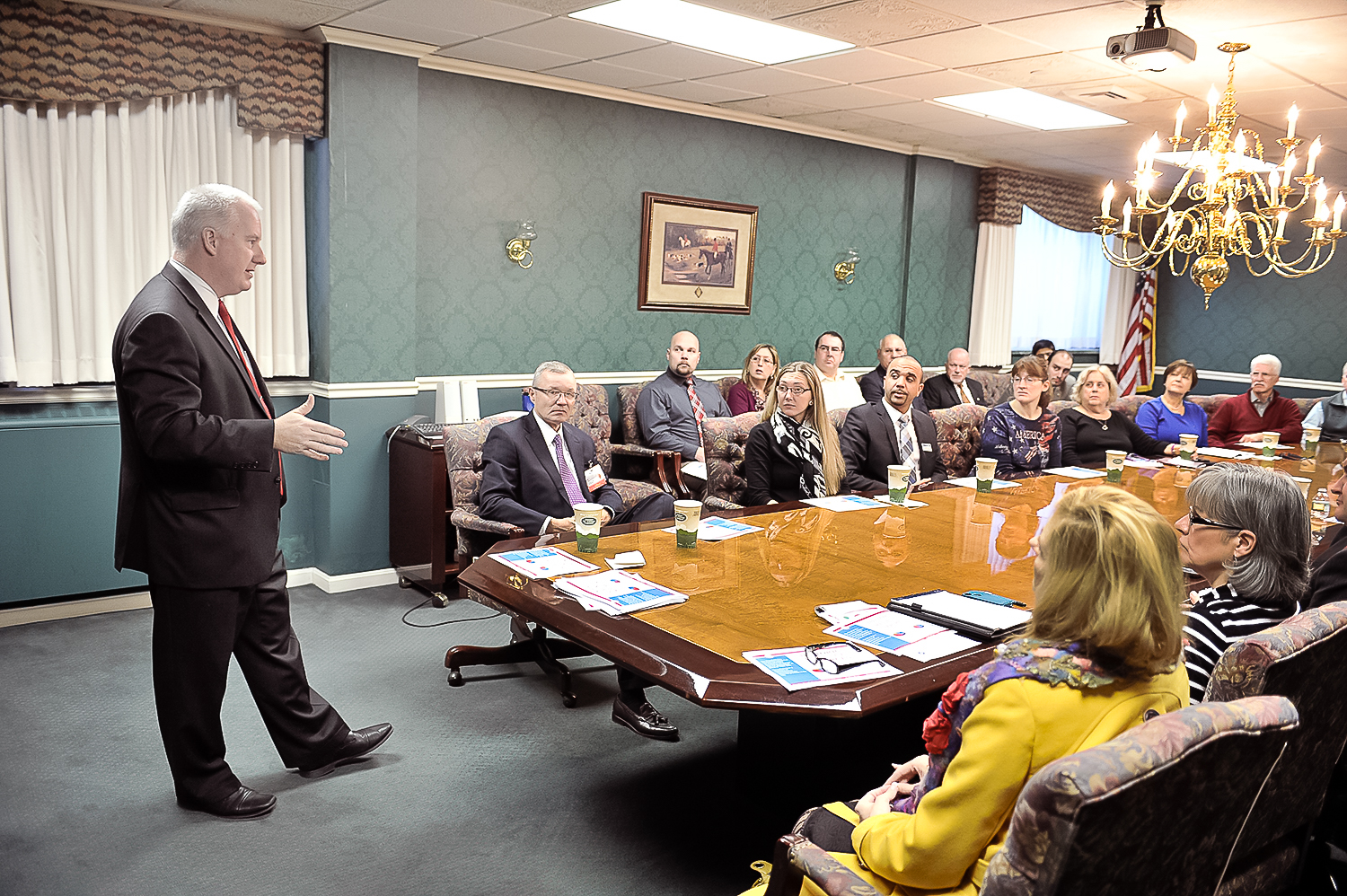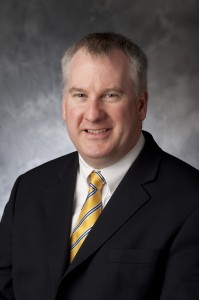WESTFIELD – Mayor Daniel M. Knapik used his monthly coffee hour sponsored by the Greater Westfield Chamber of Commerce yesterday morning held at Noble Hospital to give city businesspeople and residents his tax outlook for the upcoming year, prior to the closing of the city council’s tax rate public hearing at City Hall on Thursday at 7 p.m.
According to projections from City Hall, Westfield is set to have $12,817,779 available revenues for appropriation, $359,536 will become available if the 1.25 percent levy is approved.
The city also has 32 appropriation requests totalling an estimated $5,546,992, ranging from a $1.6 million contribution to the city’s Other Postemployment Benefits (OPEB) trust to an $8,000 severance payment to the police department. The majority of requests fall between $100,000 to $800,000.
“The city of Westfield is a corporation with $131 million as an annual budget with 1,600 employees,” he said. “It also has hundreds of property assets worth millions and millions of dollars.”
Knapik referenced the age of the city’s utilities, extensive road mileage and an aging police station on Washington Street, all of which are set to contribute to high maintenance costs in the coming years.
“It’s going to be untold hundreds of thousands of dollars to fix and I’m not in a position to build a brand new one,” he said of the police station. “We just put a new roof on it two years ago and upgraded the cooling and heating plants.”
“As a taxpayer, these are things you own,” Knapik said, citing facts and numbers from a sheet distributed to the 20 or so in attendance. “In politics, the memory is about as short as yesterday and you really need to look at yesterday and the day before to figure out where you should be going tomorrow.”
“In the fall is when we typically set the rate that the tapayers will pay,” said Knapik. “We have a split rate between residential and commerical/industrial business, who pay a higher rate. Many of the communities around pay a uniform rate.”
Knapik said that while residential property values are starting to rise again, businesses haven’t seen much growth in their valuations over the past few years, adding that the state has continued cutting local aid funding tied to the state’s lottery fund.
“Unrestricted local aid has no strings attached and the number allocated for this year is about $550 million less than it was in ’08,” he said. “The state budget has never been bigger than it is today – it’s grown by $1 billion a year during the recession – and yet that number never came back.”
According to the projections passed out to the coffee hour patrons, 54 percent of the city’s revenue for the fiscal year 2015 will come from it’s property tax levy, with 33 percent coming from state aid, with the remaining 13 percent coming from local receipts and sources.
These figures differ sharply from the fiscal year 2008 figures, when 46 percent came from property taxes, 38 percent from the Commonwealth and 16 percent from local receipts and sources.
“Local taxpayers have had to shoulder that burden,” Knapik said. “The only way you get property tax relief is to have super-stellar business growth to occur in your community. The state needs to revisit it’s formula and relationship with the cities and towns.”
Knapik had few nice things to say about one of the proposed plans of outgoing Gov. Deval L. Patrick, who sought to cut an additional $25 million in local aid funding – $157,000 of which would have gone to Westfield.
The Mayor added that incoming Governor Charlie Baker has pledged to release $100 million in funding for the Commonwealth’s 351 municipalities.
“When our partners in state government run into trouble, they knock us in the cities and towns on the chins first,” he said. “Folks at the Main Street level have to let their voices be heard that enough is enough. Urban politicians want more and more for what they want and the legislature is heavily urbanized.”



